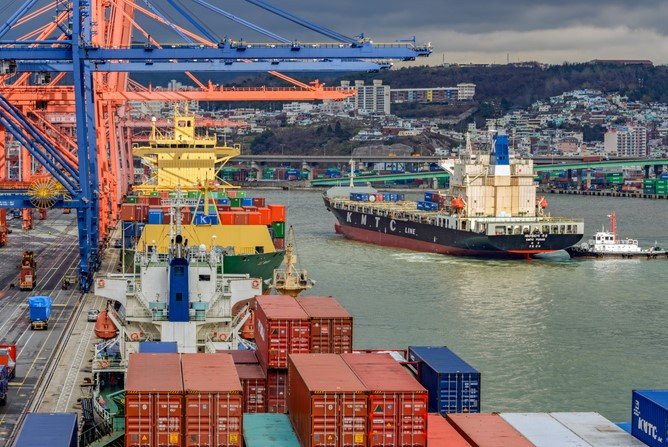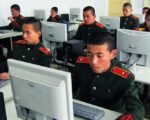Majority of firms anticipate stable or improved conditions; cost control and export strategies top the agenda
Korea Inc. isn’t breaking out the champagne just yet — but there’s a shift in the mood. After months of grappling with sluggish domestic demand and rising costs, more than 80% of Korean companies now expect business conditions in the second half of 2025 to be either stable or better than the first. That’s according to the latest survey from the Federation of Korean Industries (FKI), released on July 18.
It’s not a euphoric recovery, but it’s not despair either. In fact, cautious optimism seems to be setting the tone for the rest of the year.
Survey Shows Hope, Not Hype
The FKI polled 1,000 of Korea’s top firms by sales, with 152 providing feedback. The key takeaway? Most aren’t forecasting a boom, but they’re also not bracing for disaster.
-
53.3% expect business conditions in H2 to be about the same as H1
-
30.2% predict things will improve
-
16.5% say conditions will worsen
Notably, even those expecting deterioration see light at the end of the tunnel — albeit a little down the track. Among that group:
-
40% expect a rebound by Q1 2026
-
24% think it won’t arrive until after Q3 2026
Only a small fraction are looking for improvement before the end of 2025.

Trouble Spots: Still Plenty to Worry About
No surprise here: the same old culprits are keeping executives up at night.
The biggest worry? Weak domestic demand and recessionary pressure, flagged by 25.7% of respondents.
Other top concerns:
-
Global demand slowdowns and export slumps (14.1%)
-
Uncertainty in the international trade environment (14.1%)
-
Supply chain woes and raw material price hikes (14.1%)
One senior executive in the electronics sector put it plainly: “We’re not drowning anymore, but we’re still in deep water.”
Challenges Stack Up — Here’s What’s Weighing Them Down
Companies shared what’s hitting them hardest right now. And while some pain points have lingered since the pandemic, others reflect newer, more structural shifts in the economy.
Check out the top challenges companies are facing:
| Challenge | % of Respondents |
|---|---|
| Export decline | 20.4% |
| Raw material & energy price spikes | 19.7% |
| Weak domestic demand | 18.4% |
| Rising labor costs | 14.5% |
| Uncertainty in overseas markets | 11.2% |
| Supply chain disruptions | 8.6% |
| High interest rates | 4.5% |
| Decline in new orders | 2.7% |
There’s no single fix. But the list shows just how multi-layered the fight for profitability has become.
Leaner, Smarter, More Global: How Firms Plan to Survive
Faced with all this, Korean businesses aren’t sitting still. Their playbook for the second half of 2025 is clear: conserve, focus, and expand abroad.
Management strategies, in order of popularity:
-
Cost cuts and operational efficiency (28.0%)
-
Doubling down on core business areas (19.1%)
-
Boosting efforts to grow in overseas markets (16.4%)
-
Tighter business risk management (13.5%)
-
Hunting for future growth sectors (10.9%)
Others are putting smaller chips on automation, AI-driven transformation, and talent retention — but those lag well behind the top priorities.
And for those betting on digital transformation? It’s a slow burn.
What They Want from the Government
Private sector optimism alone isn’t enough. Businesses want the state to step up, especially as international trade tension — particularly involving U.S. tariffs — remains unpredictable.
Here’s a quick look at what companies are asking from policymakers:
-
Stabilizing raw material supply chains (20.1%)
-
Helping export firms navigate trade disputes (16.4%)
-
Rolling back regulations on business operations (14.5%)
-
Stimulating domestic consumption (13.2%)
-
Offering more financial and tax incentives (11.2%)
One executive in the shipbuilding industry said, “If we can’t count on global markets for growth, we need Seoul to help us make the home market work.”
Some Caution Still Lingers
It’s worth noting: optimism isn’t universal.
That 16.5% expecting worsening conditions? Many of them believe the real recovery won’t show up until well into 2026. Their forecasts:
-
Q1 2026 – 40.0%
-
After Q3 2026 – 24.0%
-
Q2 2026 – 16.0%
-
Q4 2025 – 12.0%
-
Q3 2025 – 8.0%
In other words, while momentum may be picking up, no one’s calling this a comeback yet.
Final Word: Not a Boom, but Maybe a Bounce
Things are moving — slowly. And in this economy, slow is good.
The FKI survey paints a picture of Korean firms that have adjusted expectations, cut the fat, and are bracing for a long-haul recovery. There’s no illusion that the next few months will be easy. But compared to the uncertainty that colored much of 2024 and early 2025, stability — even a shaky one — feels like progress.
As one manufacturing CEO summed it up, “We’re not cheering yet. But we’re breathing easier.”








